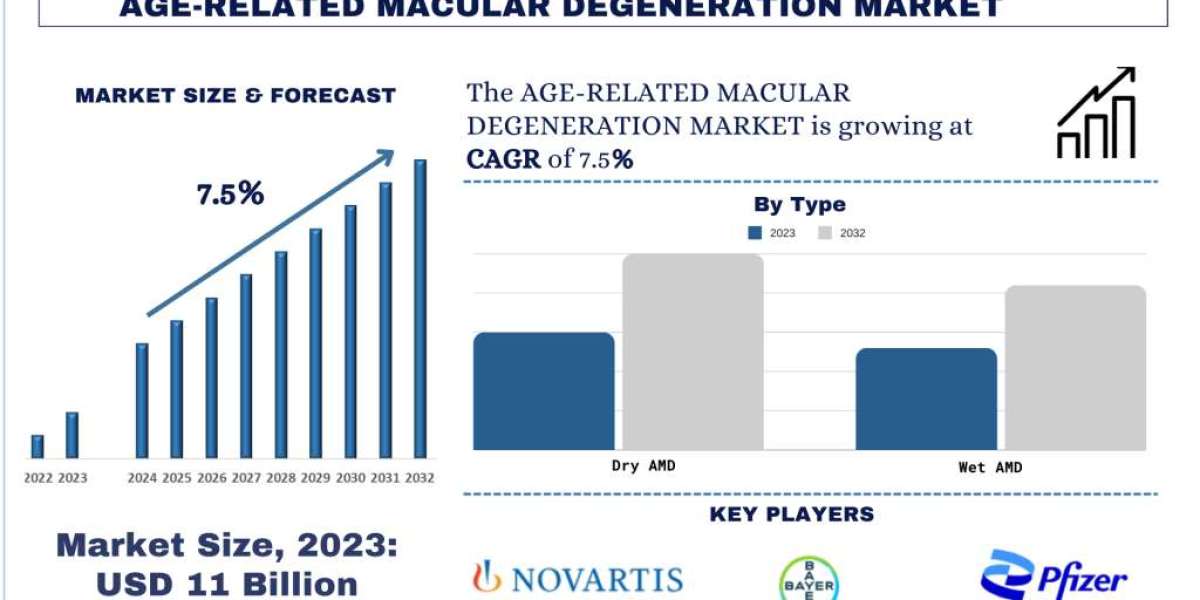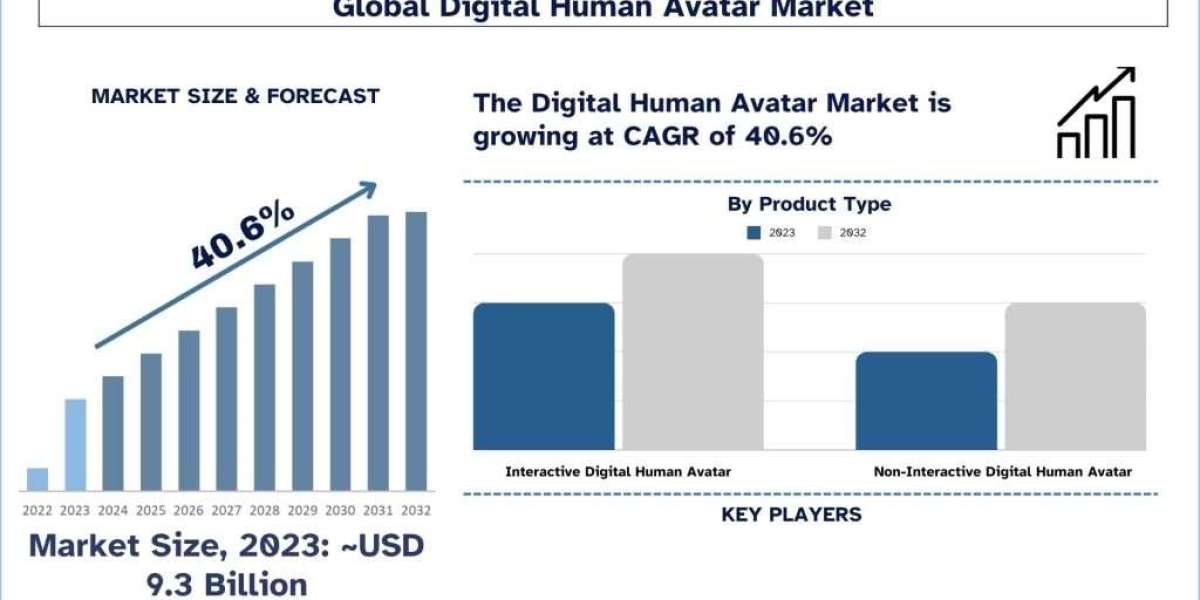According to a new report by UnivDatos Market Insights, the Age-related Macular Degeneration Market is expected to reach USD 21 Billion in 2032 by growing at a CAGR of ~7.5%. Age-related macular degeneration (AMD) is a common eye condition and a leading cause of vision loss among people aged 50 and older. It affects the macula, the part of the retina responsible for sharp, central vision needed for activities like reading and driving. AMD progresses in two forms: dry (atrophic) and wet (neovascular). While the exact cause is unknown, it is primarily associated with aging, with risk factors including genetics, smoking, and cardiovascular health. The prevalence of AMD increases with age. For instance, as pe the data of the National Eye Institute (NEI), as of 2020, approximately 11 million people in the United States have some form of AMD, and this number is expected to double by 2050 due to the aging population.
Request To Download Sample of This Strategic Report - https://univdatos.com/get-a-free-sample-form-php/?product_id=62487
Along with this, the rising geriatric population is also driving the growth of the market. For instance, as per the data of WHO, in 2019, the elderly population (60+ years age) was 1 billion, which is expected to reach 1.4 billion by 2030 and 2.1 billion by 2050. Further, two major risk factors for AMD are cardiovascular disease and smoking. According to a 2021 study conducted by the Centers for Disease Control and Prevention (CDC), smokers had twice the risk of developing AMD compared to non-smokers. Additionally, a healthy lifestyle that includes regular exercise and a balanced diet might help reduce some of the risks related to AMD.
Applications of Different Age-related Macular Degeneration
1. Anti-VEGF Therapy
Application: Anti-vascular endothelial growth factor (anti-VEGF) therapy is used to treat neovascular (wet) AMD. It involves the injection of medications directly into the eye to inhibit the growth of abnormal blood vessels and reduce fluid leakage.
For instance, anti-VEGF medications like bevacizumab (Avastin), aflibercept (Eylea), and ranibizumab (Lucentis) are frequently utilized. Patients with wet AMD have demonstrated a considerable reduction in vision loss and, in certain situations, an improvement in visual acuity with these treatments.
2. Photodynamic Therapy (PDT)
Application: Photodynamic therapy uses a photosensitizing drug and laser light to target and destroy abnormal blood vessels in the retina.
For instance, Verteporfin, also known as Visudyne, is a medication used in PDT. Following intravenous injection, the medication selectively closes the aberrant arteries without harming the surrounding tissues when laser light is focused on the retinal region that is afflicted.
3. Laser Therapy
Application: Laser therapy, specifically thermal laser photocoagulation, is used to seal leaking blood vessels in the retina.
Example: This therapy is less commonly used today due to the advent of anti-VEGF treatments but can still be effective in certain cases where other therapies are not suitable.
4. Gene Therapy
Application: Gene therapy aims to correct or modify genetic defects that cause AMD. It involves delivering genetic material into retinal cells to produce therapeutic proteins that counteract disease progression.
Example: Investigational treatments, such as those using adeno-associated viral vectors, are being developed to deliver genes that can restore or maintain retinal health. These therapies are still in clinical trials but show promise for long-term AMD management.
5. Stem Cell Therapy
Application: Stem cell therapy involves transplanting healthy retinal cells derived from stem cells to replace damaged cells in the macula.
Example: In order to create retinal pigment epithelium (RPE) cells, which are then implanted into the retina to restore function, clinical trials are investigating the use of induced pluripotent stem cells (iPSCs) and embryonic stem cells.
Click here to view the Report Description & TOC - https://univdatos.com/report/age-related-macular-degeneration-market/
6. Nutritional Supplements
Application: Nutritional supplements are used to decrease the growth of AMD in its early stages and as a preventive measure. Typically, these supplements include minerals, vitamins, and antioxidants.
For instance, the Age-Related Eye Disease Study (AREDS) and its follow-up AREDS2 showed that the risk of intermediate to advanced AMD progression can be decreased by high-dose formulations of vitamins C and E, zinc, copper, lutein, and zeaxanthin.
Conclusion
The application of AMD therapies is diverse and continues to evolve with advancements in medical research and technology. From anti-VEGF injections and gene therapy to nutritional supplements and lifestyle changes, these therapies collectively aim to manage and mitigate the effects of AMD, offering hope for better visual outcomes and enhanced quality of life for patients.
Related Healthcare Market Research Report
Compounding Pharmacies Market: Current Analysis and Forecast (2024-2032)
MENA Tissue Diagnostic Market: Current Analysis and Forecast (2024-2032)
Colorectal Cancer Market: Current Analysis and Forecast (2024-2032)
Polymer-Based Prefilled Syringe Market: Current Analysis and Forecast (2024-2032)
Pipette Tips Market: Current Analysis and Forecast (2024-2032)
Contact Us:
UnivDatos Market Insights
Email - [email protected]
Contact Number - +1 9782263411
Website - https://univdatos.com/
Linkedin- https://www.linkedin.com/company/univ-datos-market-insight/mycompany/








